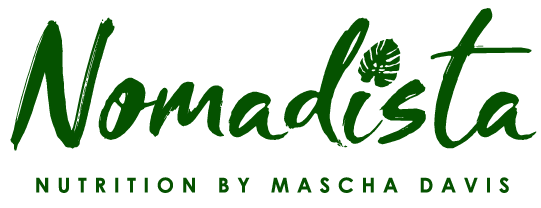It's no secret that people are concerned about climate change, sustainable farming practices and consumption of a nutritious, eco-friendly diet. What's interesting is that all of these concerns tie into one another. Changes in climate impact the food system and therefore access to nutritious food for all.
One thing that will help to support the demand for healthy, accessible food while reducing the impact on the environment is the Blue Revolution. This is a movement aiming to drastically increase aquaculture* production, help alleviate the pressure on the oceans ecosystem and provide sustainable seafood for millions.
*Note: Aquaculture is the breeding, rearing, and harvesting of fish, shellfish, algae, and other organisms in all types of water environments
In this post we’ll cover how the Blue Revolution started, why it's important, and what you can do to help join the movement.
How did the Blue Revolution Begin?
Before we talk about the Blue Revolution, let's review the Green Revolution. This period (during the 1960s and 1970s) was characterized by a large advancement in global agricultural practices which helped to massively increase the grain-based food supply. The use of modern technology and methods such as such high yielding variety (HYV) seeds, tractors, irrigation facilities, pesticides, and fertilizer made this revolution possible.
Subsequently, the Blue Revolution signifies the emergence of aquaculture as the newest and increasingly most important practice to improve the food supply.
Before the 1980s, food supply from aquaculture was sparse. However, as time went on, overfishing increased, leaving our oceans depleted. The idea of aquaculture presented a unique way to stabilize food supply without further ruining the ocean. Per the State of World Fisheries and Aquaculture Report, aquaculture has been the fastest growing food production sector in the world since 2000. Currently, farmed seafood products represent over 50% of all seafood production.
Why is the Blue Revolution Important?
The Blue Revolution will help address the following issues:
Increasing population and rate of hunger. As our population continues to increase, the demand for food is not being met. Nearly 811 million people still go hungry today. As many as three billion people rely on seafood as a primary source of protein; the emphasis on increased aquaculture production can help meet the growing demand for food.
Climate crisis. Aquaculture has less environmental impact than meat production. For example, salmon aquaculture operations have a feed conversion ratio (FCR) close to 1.0, meaning it takes ~1 lb of feed to produce 1 lb of weight gain. Compared to chicken, pork, and beef which have feed FCRs of about 2, 4, and 8, respectively.
Overfishing. Currently, over 1/3 of wild fish are fished beyond sustainable limits. Aquaculture presents a way to continue to increase the seafood supply while lessening the pressure on the ocean ecosystem.
Food insecurity and nutrition: The Blue Revolution makes fish consumption more accessible, which helps provide important nutrients such as protein, omega 3-fatty acids, iodine, vitamin D, iron and calcium. Increased consumption of fish can reduce the occurrence of nutrient deficiencies and help address food insecurity in low-income and malnourished populations.
However, there are some challenges that are associated with aquaculture as well. The first being that aquaculture production may damage natural habitats and water quality in environments such as corals, reefs or seagrasses. Some aquaculture facilities can also increase pollution and disease if not managed properly. Another concern is aquaculture species escaping from farms and then competing with wild organisms for food.
While these challenges are real, it is a misconception that all aquaculture production facilities are the same. There are many innovative companies making positive changes. Here are some examples of how these challenges are being addressed:
Many aquaculture systems are actually managed on land, not the sea. So this reduces the chance of pollution and the issue of species escaping
Location is also important. If an aquaculture farm is in water, the potential pollution and other negative marine habitat impacts can be further reduced by choosing a location in deeper, faster moving offshore ocean waters
Aquaculture production of some seafood options like bivalves and seaweed actually can have positive impacts on marine environment such as water filtration and habitat provision
How you can be a part of the Blue Revolution:
If you’re reading this, you may be wondering how you can best support not only your health, but the environment as well. Taking small steps towards changing your food intake is key. Here are a few tips to get you started:
Tip 1. Support companies that create high quality, ethical and sustainable aquaculture products. Here are some examples:
Tip 2. Check out the Planetary Health Diet: This eating style promotes an intake of nutrient dense food and a diet that is good for both people and the planet.
Tip 3. Stay up to date on the latest most sustainably sourced seafood options through organizations like The Seafood Watch.
Tip 4. Follow accounts that share educational and evidence based information about seafood and how to make the best choices. Some of my favorites include:
Tip 5. Consider consuming seafood at least 2x/week
Add canned sardines to your salad
Swap your steak for salmon
Snack on tinned mackerel with crackers
Add shellfish to pasta
Celebrate Taco Tuesday with fish tacos
Order bivalves (oysters, mussels, clams, scallops) when eating out
An increase in aquaculture production signified by The Blue Revolution offers a unique opportunity to address many concerns related to climate, environment and personal and public health. Comment below what steps you’ll take to be a part of the Blue Revolution.





